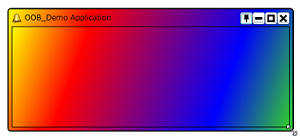Karl Erickson is excited to find out that Silverlight 4 now extends the out-of-browser feature to include support for window customization through the Window class.
 Basically, this feature lets you draw the entire window area yourself. You have complete control within the window rectangle (optionally with rounded corners).
Basically, this feature lets you draw the entire window area yourself. You have complete control within the window rectangle (optionally with rounded corners).
This gives you a lot of room for both creativity and abuse. It is your responsibility to take usability into consideration and provide custom UI for common window interactions as appropriate. To help out with this, you can programmatically move, resize, pin, minimize, normalize, maximize, and close the window.